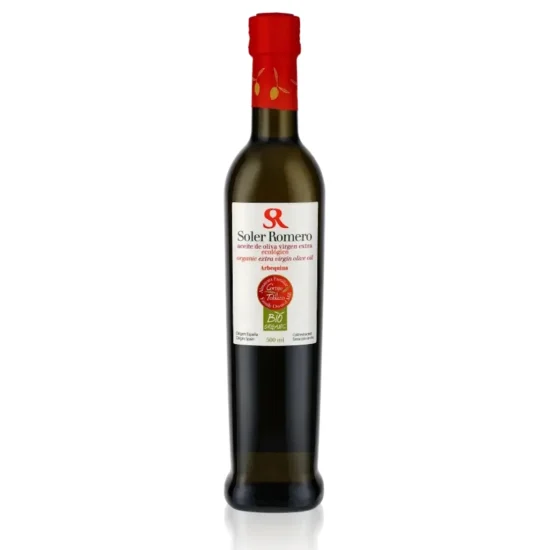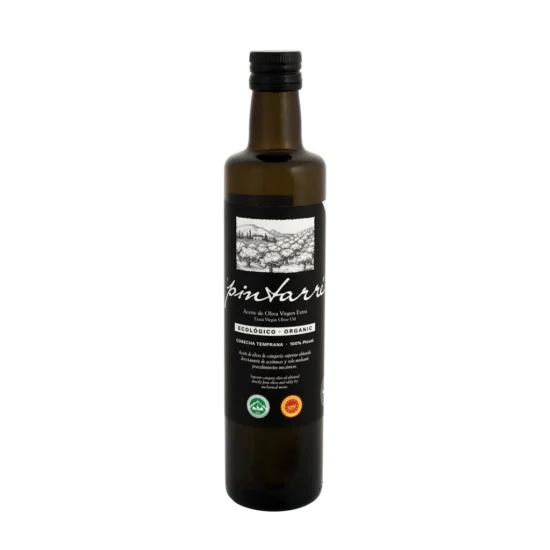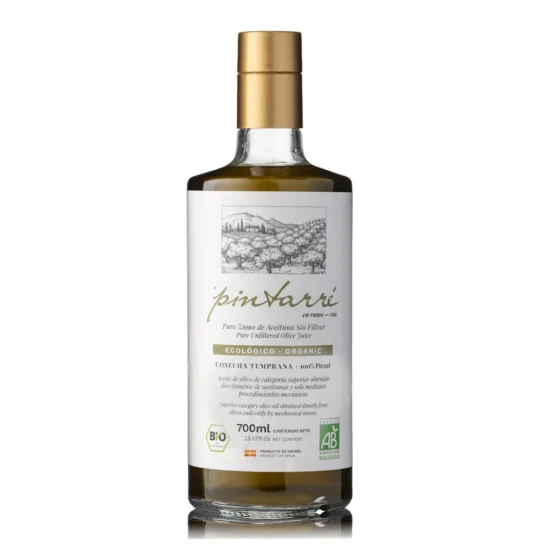
A staple in all our kitchens, some of the the healthiest cooking oils are at the heart of many of our favorite recipes, whether it’s dressing a salad or sautéing, roasting, or frying foods. Each oil takes its name from the nut, seed, fruit, plant, or grain from which it’s extracted and is generally named after the most common fat, whether saturated, polyunsaturated (PUFA), or monounsaturated (MUFA).
Fats and oils play an important role in cooking because they conduct heat efficiently, prevent food from sticking to the pan, and enhance the flavor and mouthfeel of the foods we cook.
Oils and fats are made up of chains of smaller fatty acids. When these chains are held together by single bonds, they are called “saturated” fats; When there are double bonds, they are called “unsaturated” fats.
There are three types of fatty acid chains: short, medium, and long. It is the length of these chains that determines how our body metabolizes them and how efficiently they provide us with energy. Therefore, some oils are better suited than others for cooking at high temperatures because oils change their structure when heated.
When a recipe calls for frying food, we expose the oil to a higher temperature, additional moisture from the food, and oxygen from the air. These three factors trigger chemical reactions that cause changes that can affect the oil, including its flavor.
The magnitude of the changes depends on the temperature used, the cooking time, the oil chosen, and the presence or absence of protective antioxidants. These can be nutrients like vitamin E or naturally occurring compounds called polyphenols, which are found in unrefined oils, such as virgin olive oil.
The “smoke point” of an oil is the temperature at which it begins to burn. As the name suggests, you’ll see smoke rising from the pan and invading your kitchen. This means the oil has begun to break down and is likely to form harmful compounds such as aldehydes. If you regularly consume oil that has been handled this way, it may contribute to the risk of diseases, such as cancer and heart disease.
Knowing an oil’s smoke point can help you choose the best oil for the job. However, keep in mind that certain factors influence the smoke point: a fresh oil has a higher smoke point, and as soon as you combine the oil with the food you’re cooking, you lower its smoke point because it has begun to smoke and react with the moisture in the food.
As a general rule, the more concentrated the fatty acids in an oil, the more stable the cooking oil is. This means that saturated fats and MUFAs are more likely to withstand high temperatures and are therefore less likely to change.
Please note that the smoke points shown are only a guide. Values vary depending on the freshness of the oil, its degree of refining, and its fatty acid composition. Other factors influence the smoke point, including the volume of oil used, the surface area of the pan, whether the oil is in contact with food (because this adds moisture), the degree of exposure to air and light, and the rate at which the temperature rises.
One of the first things to consider is how the oil has been treated, as this will influence its behavior when cooking and, ultimately, its health. Labels labeled “virgin” or “extra virgin” indicate that the oil has undergone minimal processing, without the use of chemicals.
The term “cold-pressed” indicates that the oil was extracted without heat, and therefore the nutrients and enzymes will remain in the finished product. Oils with these descriptions are often referred to as unrefined oils.
Refined oils, on the other hand, are processed with chemicals and may have a higher tolerance to heat because the refining process removes nutrients, enzymes, and other sensitive compounds, which are more likely to burn. However, they may contain chemical residues and will not retain their natural nutrients or enzymes, although they will benefit from a longer shelf life.
A key component of the Mediterranean diet, olive oil is made from the juice of the olive and is known for its many health benefits, from protecting against heart disease to reducing the risk of type 2 diabetes.
TheOlive oil is a PUFA, meaning it has only one double bond, making it more resistant to changes that occur during cooking. In fact, oleic acid, the predominant PUFA in olive oil, is said to be 50 times less likely to oxidize (combine with oxygen) than linoleic acid, the predominant PUFA in olive oils and vegetable oils like sunflower oil and corn oil. If you opt for virgin olive oil, you’ll also benefit from the protective antioxidant properties of many polyphenols and nutrients like vitamin E.
Smoke Point:
For temperatures up to 180-190°C, virgin olive oil is an excellent choice. Best of all, extra virgin olive oil (EVOO), made from pure, cold-pressed olives, is said to have the lowest oxidation rate of any cooking oil. Extra virgin olive oil is therefore an ideal choice for home cooking, as long as it’s not overheated. If you fry a lot and are on a tight budget, you can opt for refined olive oil and replenish it regularly when using prolonged cooking methods.
Pressed from the fruit of the avocado tree, this oil is often compared to olive oil. It is rich in MUFAs, particularly oleic acid, which increases the oil’s stability at high temperatures. Numerous studies confirm its numerous health benefits, including for the cardiovascular system. The smoke point of avocado is higher than that of olive oil, whether refined or unrefined.
Smoke Point:
While avocado oil has multiple uses, including frying, sautéing, browning, and roasting, it is a relatively expensive oil, which can limit its use in everyday cooking. Its subtle flavor allows the other ingredients in your recipe to shine.
This general-purpose oil has half the saturated fat of olive oil, is rich in MUFAs, especially oleic acid, and contains PUFAs with a favorable ratio of omega-6 to omega-3 fatty acids (2:1). Rapeseed oil also has the highest polyphenol content of the seed oils, although it should be noted that the quality of the oil depends on several factors, including harvesting, storage, and the extraction process.
In some countries, the term “canola oil” refers to the type of oil used for industrial purposes, with canola oil being the edible cooking oil. However, in the UK, the term “rapeseed oil” is used interchangeably for both types of oil, and the term “canola” is rarely used.
Smoke Point:
A useful choice when you need an oil with a neutral flavor and a good smoke point for sautéing, grilling, and baking. When choosing rapeseed oil, opt for a cold-pressed version, as it has a superior fatty acid profile and a higher content of protective polyphenols, carotenoids, and vitamin E.
Ghee is made by simmering butter: the moisture evaporates, the milk solids are removed, and a clear, golden oil remains. The low moisture content combined with the high saturated fat content gives ghee a high smoke point and a long shelf life. It is also free of lactose and casein, a milk protein, making it a suitable choice for people with lactose intolerance or milk allergies.
Studies comparing the use of ghee with vegetable oils at temperatures of 180°C suggest that ghee produces less harmful acrylamides than vegetable oils.
Smoke Point:
Thanks to its high smoke point, ghee is suitable for high-temperature cooking, such as roasting and frying. However, for baking, butter, which has a milder flavor, is a better choice, unless you have a lactose intolerance or dairy allergy.
Although coconut is referred to as oil, it is actually a fat that changes from solid to liquid slightly above room temperature. It has a particular flavor and texture that creates a unique mouthfeel and is not necessarily suitable for all dishes. Composed primarily of saturated fats (92%), coconut oil has received a lot of attention due to its relatively high content of medium-chain fatty acids.
Due to its high saturated fat contentLow in unsaturated fats, coconut oil is more resistant to oxidation than unsaturated oils such as sunflower and olive oil. Despite this, it has a relatively low smoke point, so using it in deep-fat or prolonged frying can lead to the production of harmful substances, particularly polycyclic aromatic hydrocarbons.
Smoke Point:
Choose virgin coconut oil because the extraction methods used ensure a higher content of antioxidants, including vitamin E, and protective phytonutrients. This oil is best used sparingly in the diet due to its high saturated fat content, lack of essential fatty acids, including linoleic and linolenic acids, and relatively low smoke point. Save it for stir-frying and baking.
Red palm oil is derived from the fruit of the oil palm tree, but should not be confused with palm kernel oil, which comes from the seed of the same plant. The latter is widely used in processed foods, has been stripped of its antioxidant properties, and has a yellowish-white color.
Red palm oil, on the other hand, is minimally processed and retains its carotenoid and vitamin E content, hence its red color. These nutrients are thought to explain why red palm oil may reduce the risk of atherosclerosis and high blood pressure. That said, red palm oil is high in saturated fat, although it is more of a medium-chain fat and contains no trans fats.
Smoke Point:
Red palm oil is less refined than palm oil and retains more protective nutrients, making it a healthier choice. High in saturated fat (but less than butter), red palm oil is stable at high temperatures, making it a good choice for frying and roasting.
Sunflower oil is low in saturated fat and, depending on the type you choose, may be high in PUFA (linoleic acid) or MUFA (oleic acid). Sunflower oil with a high oleic acid content is considered more stable for cooking.
One of the main disadvantages of this seed oil is that it generates more harmful aldehydes than olive, rapeseed, or coconut oils, regardless of the cooking method used. This is why it is recommended only for low-temperature cooking.
Smoke Point:
Choose a high-oleic sunflower oil and use it for low-temperature cooking methods, such as baking.
Sesame Oil
Commonly used in Asian cuisine, sesame oil is made from raw, pressed sesame seeds. It has a neutral flavor and a relatively high smoke point. Sesame oil is rich in active compounds that have anti-inflammatory and antioxidant properties.
Smoke Point:
Sesame oil is excellent for sautéing, roasting, and cooking. However, due to its intense, nutty flavor, save toasted sesame oil for drizzles or dressings.
Also known as groundnut or peanut oil, peanut oil tends to have a mild flavor. It is rich in MUFAs (50%), especially oleic acid, and is a good source of vitamin E in its unrefined form. Composed of 30% PUFAs, peanut oil is prone to oxidation, although it has a relatively high smoke point.
Smoke Point:
Verdict: Peanuts’ sweet, nutty flavor and high smoke point make them an ideal oil for sautéing, but their high PUFA content means cooking times should be short.
Produced from grape seeds, this oil is rich in polyunsaturated fats, including linoleic acid and vitamin E. Few studies have been conducted to evaluate the health effects of grapeseed oil, although it may have beneficial effects on cardiovascular health and insulin control.
Unless the product specifically states how it was processed, you should assume it was extracted with chemical solvents.
Smoke Point:
With a moderately high smoke point and a neutral flavor, grapeseed oil can be used for sautéing and cooking.
Typically a blend of oilsRefined oils with a neutral flavor. The most common oils are rapeseed, corn, and soybean. This oil is widely used in food production, both in takeout establishments and in home cooking.
The health effects of these oils vary depending on the plants they are extracted from, how they are processed, and the fatty acids they contain. Many of these oils are extracted with chemical solvents and may contain other additives such as E900, an anti-foaming agent that prevents hot oil from bubbling when frozen foods are added.
Of plant origin, this oil is rich in polyunsaturated fats, specifically omega-6. This type of fat is sensitive to oxidation and therefore does not store well. It is easily damaged by high temperatures and repeated use.
Smoke Point:
Refined vegetable oils can be fine for frying, sautéing, and single-serving cooking.
The oil you choose will depend on the frying time, temperature, and the neutrality or flavor you want to achieve. Of all the options listed above, olive oil works well and is considered superior to most vegetable oils, although every effort should be made to keep heating time to a minimum. Using olive oil also improves the quality of dietary fats, as it has a healthier profile, high in MUFAs and low in saturated fat.
For those following a vegan or plant-based diet, cold-pressed canola oil is a good choice due to its high content of alpha-linolenic acid (ALA), an important omega-3 fatty acid.
In addition to using the right oil, be sure to store your oil in a cool, dry place, out of direct sunlight, and preferably in a dark glass bottle rather than a plastic one. Buy small amounts to replenish regularly and never reuse the oil.
Fats can be categorized into “good” fats and “bad” fats. Thus, “good” fats include monounsaturated fats and polyunsaturated fats, and are found in vegetable oils such as olive oil and canola oil.
“Bad” fats include trans fats and saturated fats, with trans fats being the worst for our health and saturated fats being slightly better but worse than “good” fats. In fact, trans fats have been largely eliminated from our diets, but saturated fats are found in some plant-based oils such as coconut oil and palm oil.
Remember that palm oil is extracted from the fruit of the oil palm tree and is one of the most consumed oils in the world, and also one of the most controversial. In particular, palm oil can increase LDL cholesterol and “bad” triglycerides, a risk factor for cardiovascular disease and stroke.
What makes an oil healthy or unhealthy comes down to the type of fats it contains. Palm oil contains approximately 50% saturated fats and 50% “good” fats, such as monounsaturated and polyunsaturated fatty acids. This ratio makes it better than other tropical oils, such as coconut oil, which contains approximately 85% saturated fats. But 50% is still quite high compared to other oils, such as olive oil, which only contain traces of saturated fats.
Olive oil, without a doubt, since it contains very little harmful saturated fat and is also rich in “good” fats (monounsaturated and polyunsaturated fats) and antioxidants. Olive oil has been linked to numerous health benefits, including:
In short, choosing oils such as olive oil, avocado oil, or canola oil are healthier long-term options.
Consuming olive oil helps prevent chronic diseases in the face of campaigns promoting coconut oil, a fat with no scientific evidence confirming its beneficial impact on people’s health.
This has been confirmed by researchers from the Department of Health Sciences at the University of Jaén (UJA) who studied the effects of three high-fat diets based on coconut, sunflower, and extra virgin olive oil on adipose tissue, metabolism, and inflammation.
This research project seeks to challenge diets characterized by high calorie, saturated fat, and sugar intake. To carry out the work, the team of scientists from UJA conducted a comparative analysis of the effect of three high-fat diets—extra virgin olive oil, sunflower oil, and coconut oil—on three groups of mice.
Specifically, they sought to obtain scientific evidence on the real impact of coconut oil on health, given that new trends favor its consumption as the healthiest source of vegetable fat. In this sense, some non-scientific articles may have decisively influenced the creation of this opinion, responding to economic interests determined to promote certain oils devoid of “scientific evidence.”
Thus, this study sought to understand the effects of each of these fats on metabolism, inflammation, and adipose tissue.
Among the results obtained, a diet rich in coconut oil would cause a decrease in leptin, the satiety hormone. This decrease would not help reduce appetite, but would instead cause a constant desire to eat.
This hormone is also related to the immune system and thermogenesis, that is, the process of heat production in the individual’s body, which helps burn stored fat. Decreased leptin is also associated with certain pathologies such as lipodystrophy.
Furthermore, diets that use EVOO increase leptin, promoting an anti-inflammatory state, which Gaforio believes is very useful for preventing chronic diseases. Another result obtained corroborates that Extra Virgin Olive Oil has a thermogenic effect, which prevents the human body from accumulating fat.
The results of this research would therefore confirm that not all fats are equally healthy because they have a very different immunometabolic impact.
The study, recently published in the journal Molecular Nutrition & Food Research, was led by University of Jaén immunology professor José Juan Gaforio.
Important Note: aceitedelcampo.com promotes the consumption of extra virgin olive oil for its culinary qualities and health benefits. However, no medication or current treatment should be replaced without the guidance of a healthcare professional.




ALZAYT EXPORT SL
info@aceitedelcampo.com
C/ Eduardo Bosca 19, 2-5
46023 Valencia
Subscribe and receive a coupon by email for your next purchase.